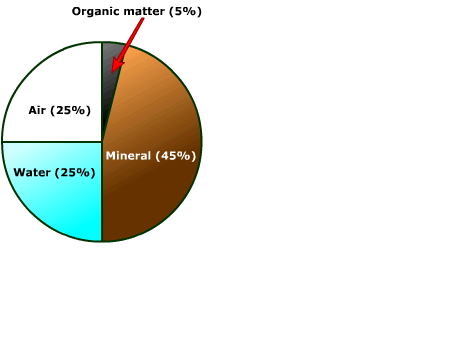![]() Describe composition and function of soil in crop production
Describe composition and function of soil in crop production
Soil is a collection of natural bodies occupying portion of the earth’s surface. It supports plants and have properties due to the integrated effect of climate and living matter. Functions of soil:
There are four major components of soil namely mineral, air, water and organic matter. Click on the organic and mineral parts of the graph to view its composition
The organic matter of the soil The mineral composition of the soil |
Now that you can describe the composition of soil, we can now proceed with the forms of soil-water.
